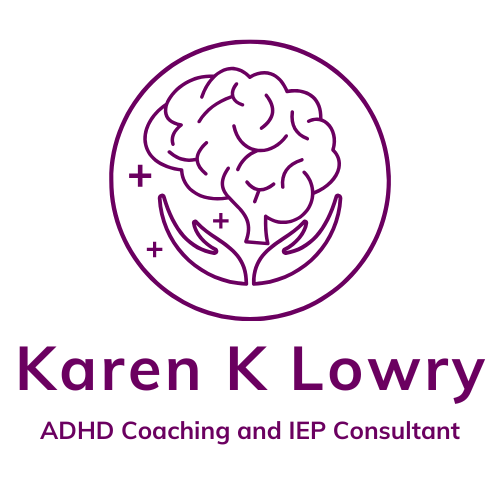Parenting a child with Attention-Deficit/Hyperactivity Disorder (ADHD) can be both rewarding and deeply challenging. The path is filled with emotional highs and lows, demanding flexibility, patience, and a steady source of guidance. While ADHD affects children in unique ways, parents also need support to manage the day-to-day realities and long-term planning that come with the diagnosis. Equipping parents with the right tools and mindset is crucial—not only for the child’s development but for the health and harmony of the whole family.
As an ADHD coach and Master Iep Coach, I help families move from frustration to clarity, creating sustainable systems and strategies that empower both parents and children. The key lies in understanding, consistency, and collaborative support.
Understanding ADHD from a Parent’s Perspective
The first step in supporting a child with ADHD is understanding how the condition manifests. It goes beyond typical childhood behaviors. Common traits include:
- Difficulty with focus and sustained attention
- Impulsivity and emotional reactivity
- Disorganization and forgetfulness
- Trouble following multi-step instructions
- Inconsistent performance across environments
Understanding these patterns helps parents distinguish between willful disobedience and neurological challenges. This shift in perspective allows for more compassionate, effective parenting.
The Emotional Toll on Parents
Many parents of children with ADHD report feelings of guilt, isolation, and burnout. You may wonder if you’re doing enough or if you’re to blame for your child’s struggles. These emotional challenges are common—and they’re valid. Believe me, I felt all of these feelings as my son with ADHD went through the school system.
Support for parents isn’t just about learning strategies for their children; it also involves:
- Normalizing emotional reactions
- Creating space for parental self-care
- Providing tools for stress management and communication
No one is born knowing how to navigate ADHD. With the right guidance, I can help you to become your child’s strongest advocate and calmest anchor. But first, you need to become adept at advocacy!
Practical Strategies for Home Life
Here are proven techniques to create more structure and harmony at home:
1. Set Clear Expectations and Routines
Children with ADHD thrive with consistency. Establish predictable routines for mornings, homework, meals, and bedtime. Use visual charts or calendars to reinforce expectations. This can be trial and error because what works for one child may not work for another. But certainly routines are so important for all of them!
2. Use Positive Reinforcement
Acknowledge efforts more than outcomes. Use praise, small rewards, and positive feedback to encourage desired behaviors. Communication between school and home is so important.
3. Break Tasks into Manageable Steps
Large tasks can feel overwhelming. Break assignments, chores, or instructions into smaller, sequential steps to make them more manageable.
4. Create a Calm Environment
Minimize distractions by creating structured workspaces. Limit excessive noise, clutter, and visual stimulation during homework or other focus-heavy activities.
5. Foster Emotional Regulation
Teach your child simple emotional regulation tools like deep breathing, counting, or labeling feelings. Practice co-regulation—your calmness helps model and stabilize theirs.
6. Collaborate with Educators and Professionals
Maintain open communication with teachers, school staff, and any professionals involved in your child’s care. Unified strategies between home and school lead to more consistent progress.
Learn how to advocate effectively in school settings
Building a Support System for Yourself
You don’t have to do this alone. Parents need a support system as much as their children do. Some essential elements include:
- Coaching or counseling: Working with a professional can help you troubleshoot parenting challenges and build personalized strategies.
- Peer networks: Connecting with other parents who understand your experience reduces isolation and provides practical insights. So many times, we as parents have so much guilt. In addition, we feel the judgemental behavior all around us and we feel responsible for all of the negative behaviors and lack of success of our kids.
- Workshops and training: Education builds confidence. Consider parent training programs focused on behavior management and executive function support.
See how coaching can guide you and your child
Advocacy: Becoming a Voice for Your Child
Navigating schools, accommodations, and assessments can feel overwhelming. Parents are often the lead advocates in IEP meetings, behavioral plans, and 504 accommodations.
Build advocacy skills by:
- Learning your child’s rights in the school system
- Documenting behaviors and interventions
- Preparing questions and goals for meetings
- Working collaboratively but assertively with school teams
Discover more about IEP coaching and advocacy
Strengthening the Parent-Child Connection
Beyond the routines, strategies, and meetings, your relationship with your child remains the foundation. Make space for moments of joy, connection, and mutual respect:
- Schedule one-on-one time that’s not task-focused
- Listen actively without correcting or interrupting
- Share your observations and feelings openly
- Celebrate small wins together
These moments build trust and remind your child that they are more than their diagnosis.
Final Thoughts
Supporting a child with ADHD begins with supporting the parent. You are not alone, and there is no shame in seeking tools, resources, and help. With understanding, structure, and collaboration, you can create a home environment that nurtures growth, resilience, and connection.
As you guide your child through life with ADHD, remember this: your advocacy, compassion, and presence are some of the most powerful supports they will ever receive.






